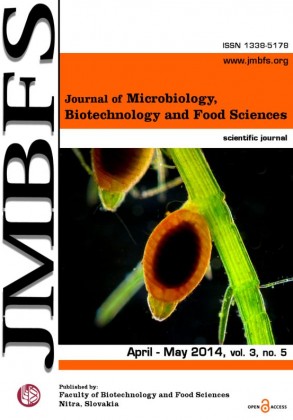APPLICATION OF NANOTECHNOLOGY IN FOOD PACKAGING
Keywords:
Nanotechnology, nanosilver, nano-packagingAbstract
Nanotechnology involves the design, production and use of structures through control of the size and shape of the materials at the nanometre scale. Also, nanomaterials have been already applied in many fields of human life. Nanocomposites have already led to several innovations with potential applications in the food packaging sector. The use of nanocomposite formulations is expected to considerably enhance the shelf-life of many types of food. This improvement can lead to lower weight packages because less material is needed to obtain the same or even better barrier properties. This, in turn, can lead to reduced package cost with less packaging waste. Antimicrobial packaging is another area with high potential for applying nanocomposite technology. Nanostructured antimicrobials have a higher surface area-to-volume ratio when compared with their higher scale counterparts. Therefore, antimicrobial nanocomposite packaging systems are supposed to be particularly efficient in their activities against microbial cells. In this review, definition of nanomaterials is presented. Besides, the paper shows examples of nanocomposities and antimicrobial nanopackaging mainly with the use of nanosilver. Moreover, nanoparticles such ZnO, TiO2, MgO and nanosensors in packaging were presented.Downloads
Downloads
Published
2014-04-01
How to Cite
Dobrucka, R. (2014). APPLICATION OF NANOTECHNOLOGY IN FOOD PACKAGING. Journal of Microbiology, Biotechnology and Food Sciences, 3(5), 353–359. Retrieved from https://office2.jmbfs.org/index.php/JMBFS/article/view/6994
Issue
Section
Food Sciences
License
Copyright (c) 2014 Renata Dobrucka

This work is licensed under a Creative Commons Attribution 4.0 International License.
All papers published in the Journal of Microbiology, Biotechnology and Food Sciences are published under a CC-BY licence (CC-BY 4.0). Published materials can be shared (copy and redistribute the material in any medium or format) and adapted (remix, transform, and build upon the material for any purpose, even commercially) with specifying the author(s).

